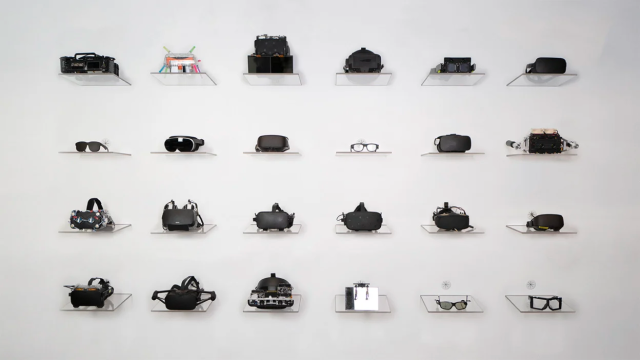Everyone’s second favourite tech CEO Mark Zuckerberg has shown off his collection of VR headset prototypes. Stay with us, this is a fun one.
Zuckerberg last week held a virtual show-and-tell of Meta’s VR (virtual reality) research and prototyping done by the company’s Reality Labs division.
The VR headset designs showcased by Zuckerber are called Starburst, Butterscotch, Holocake and Mirror Lake. And they’re coming for the company’s own Meta Quest 2.
As our friends over at Mashable explain, the prototypes were built to overcome four elements of the human visual system: focus, resolution, distortion and high dynamic range.
Meta calls this the “visual Turing test”. The point where VR is practically indistinguishable from IRL.
Not a joke.
The trouble, however, is that these ideas all need to come together in a device that is lightweight enough for it to be worn on the face/head, not look hideous and actually be useful. Although that last one isn’t always high on the priority list of tech CEOs.
To break this down a little bit, Butterscotch is an attempt at a near-retina-quality headset display. It delivers stunning clarity, and a high enough resolution that you can read the 20/20 vision line on an eye chart in VR. It apparently boasts about 2.5 times the resolution of the Quest 2. Unfortunately, as a result, the field of view is only about half of the Quest 2.
Starburst uses a powerful lamp and has handles to support just how heavy this thing is. It apparently produces HDR lighting with an unconfirmed (but a lot) amount of nits of brightness.
Holocake 2 puts everything together, but it’s PC tethered. It could result in a device being as thin as sunglasses. Holocake 2 could also support varifocal and eye-tracking.
And Mirror Lake, a more mixed reality device, would include an outward-facing display that projects an image of the user’s eyes to reduce the sense of physical separation for people outside the headset. As Mashable explained, Mirror Lake combines the Holocake tech with multi-view eye-tracking, electronic varifocal modules, pass-through technology and thin prescription attachments (to eliminate the need for contacts or eyeglasses). The report said Mirror Lake also features a reverse pass-through display that “lets nearby people see a realistic digital representation of the headset wearer’s eyes and face.”
While the technology is promising, it won’t become viable for consumer use for years. Zuckerberg provided no details around the cost of any upcoming VR kit, nor a timeline for these headsets.
But hey, we got a pretty show and tell. And a doubling down from Zuckerberg that Meta is way ahead of its competition and that it truly wants to be at the heart of this whole metaverse thing.
